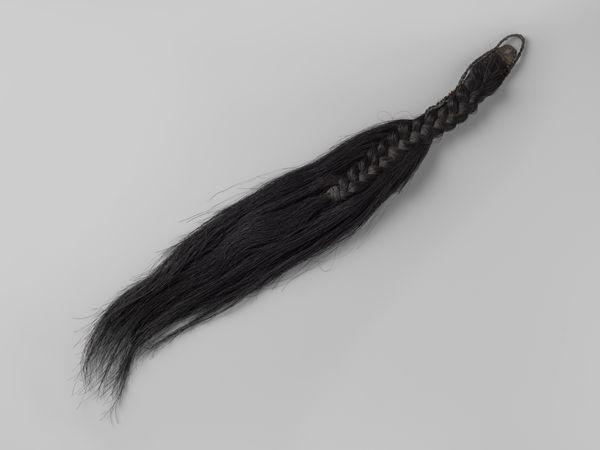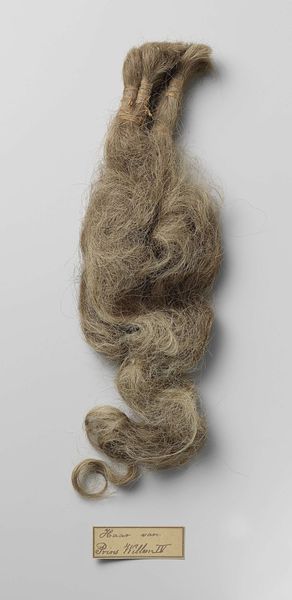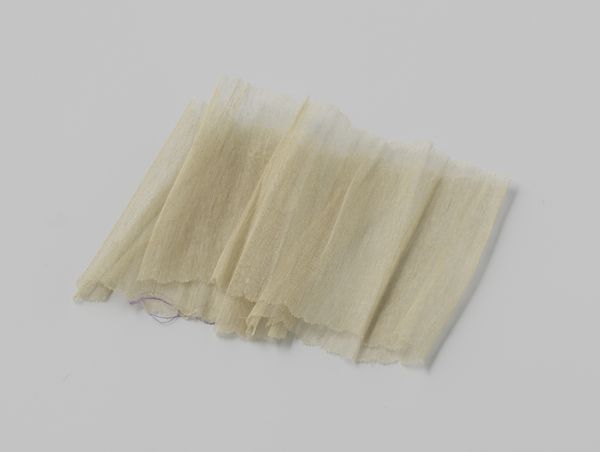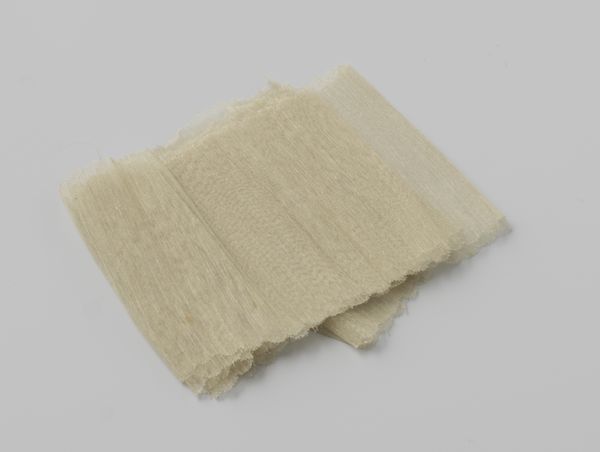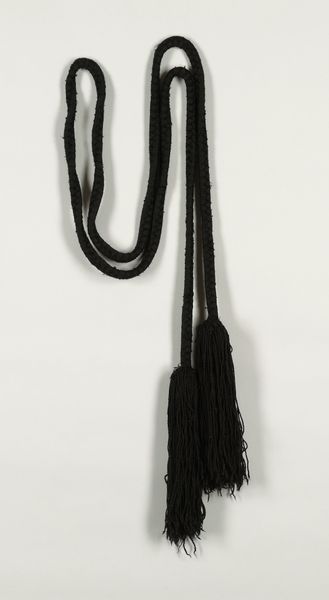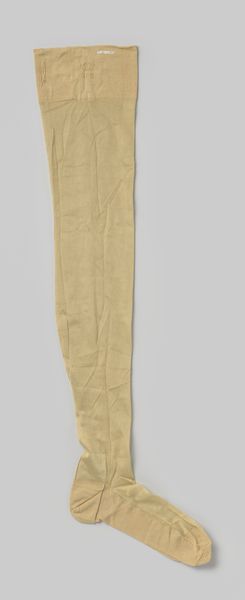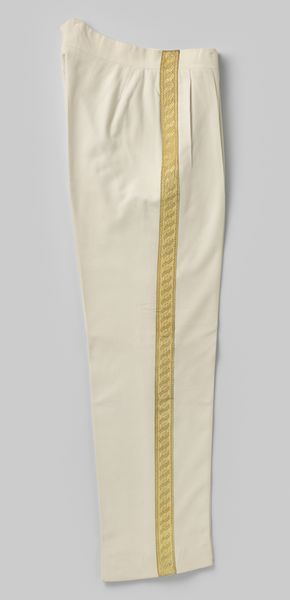
Pluim bij een tsjapka van eerste of tweede regiment lansiers, M. 1841 c. 1841 - 1849
0:00
0:00
photography
#
portrait
#
photography
Dimensions: width 34.5 cm, height 30 cm, depth 29.5 , length 26 cm
Copyright: Rijks Museum: Open Domain
Editor: Here we have a photograph titled "Pluim bij een tsjapka van eerste of tweede regiment lansiers, M. 1841," dating from around 1841 to 1849 by an anonymous artist. It depicts a blonde plume. It’s strikingly… intimate. Almost like a portrait of someone’s hair. How do you interpret this work, especially given its historical context? Curator: What strikes me is how this object, seemingly insignificant on its own, speaks volumes about the power dynamics of 19th-century militarism and its connection to individual identity. This plume, adorning the tsjapka, or military cap, was part of a uniform, signaling belonging and allegiance. Who was compelled to wear this, and what did it mean to them, knowing the violent function of the regiments that adopted it? Editor: So, it's less about the aesthetic of the object itself, and more about what it represents within the social fabric of the time? Curator: Precisely. Consider the visual language – the rigid structure of the regiment, contrasted with the delicate strands of the plume. Is there tension there? How might that tension reflect the lived experience of those soldiers – perhaps torn between duty and their own individuality? Where does luxury meet brutality in 19th-century military culture? Editor: That reframes my entire understanding of it. I initially saw just a photograph of a plume. I see that the seemingly simple image can unlock conversations about conformity, individuality, and the realities of warfare. Curator: Absolutely. Art has this power. And now consider what meanings it can yield for us today! Editor: Thanks, that’s incredibly insightful, thank you!
Comments
No comments
Be the first to comment and join the conversation on the ultimate creative platform.


